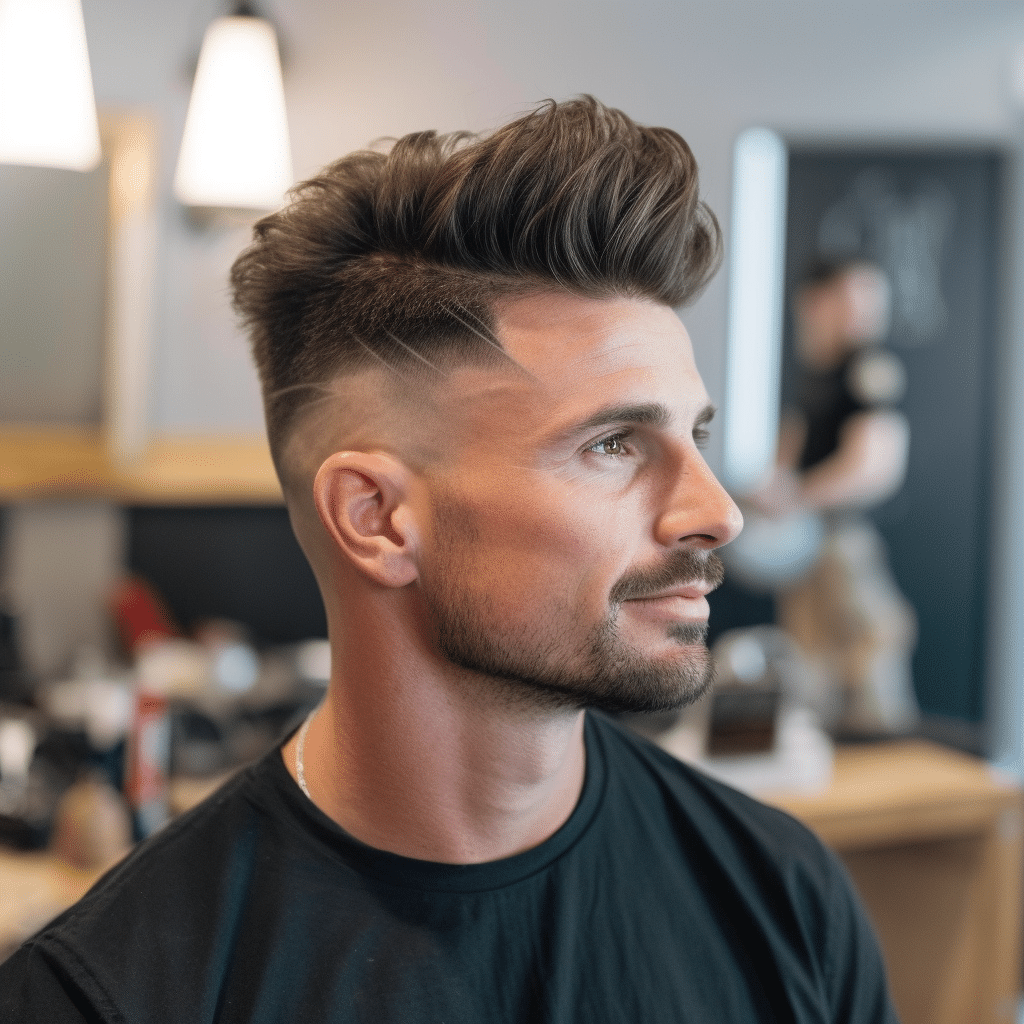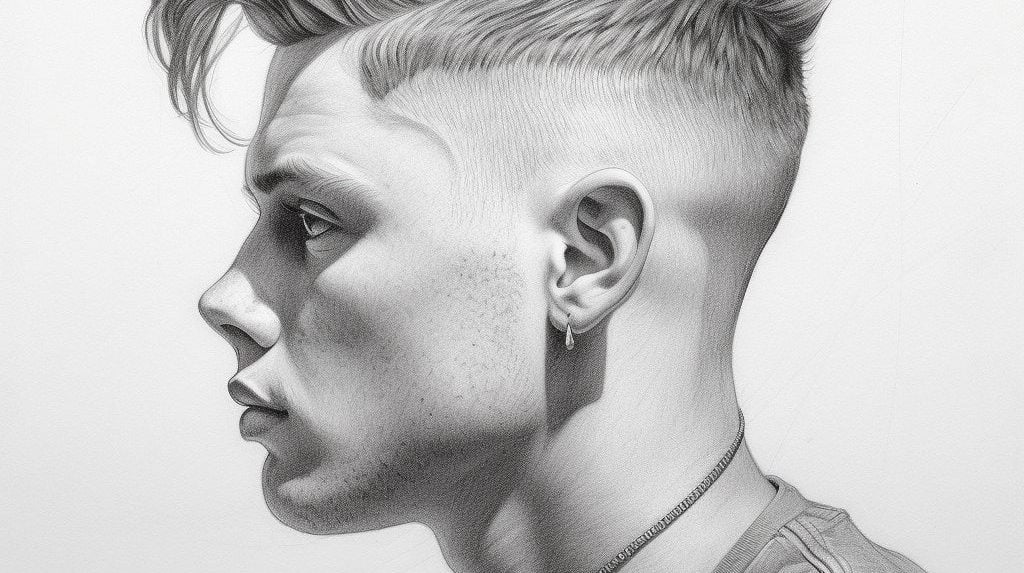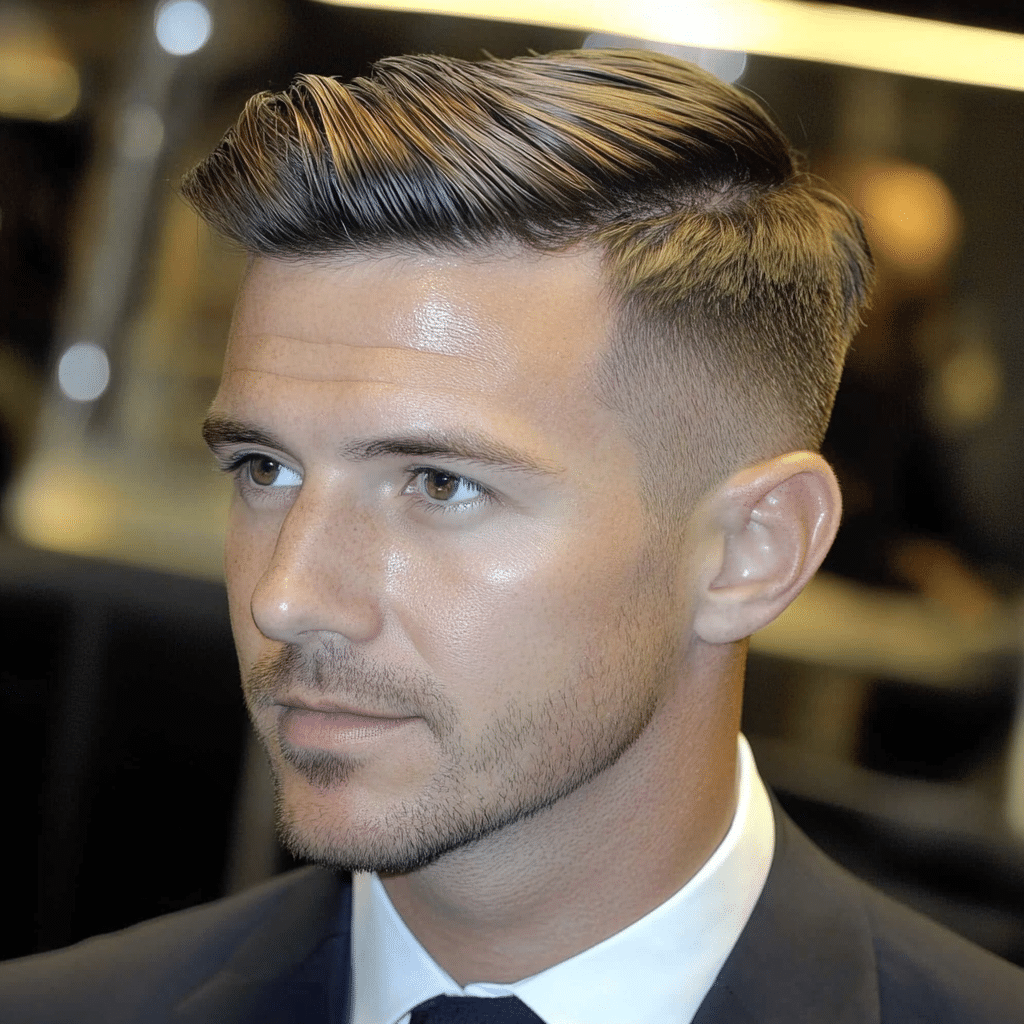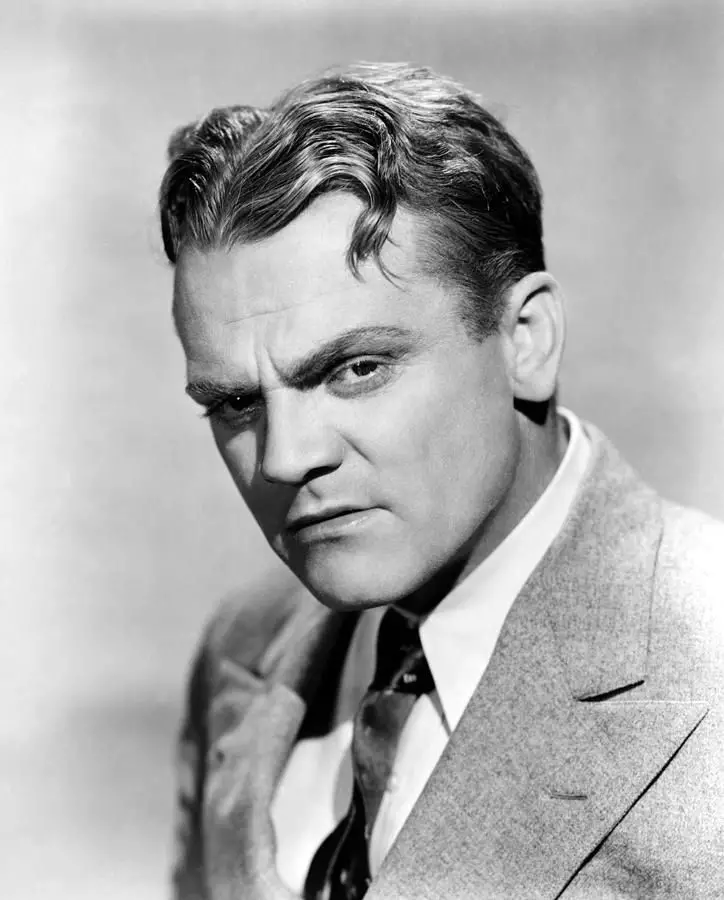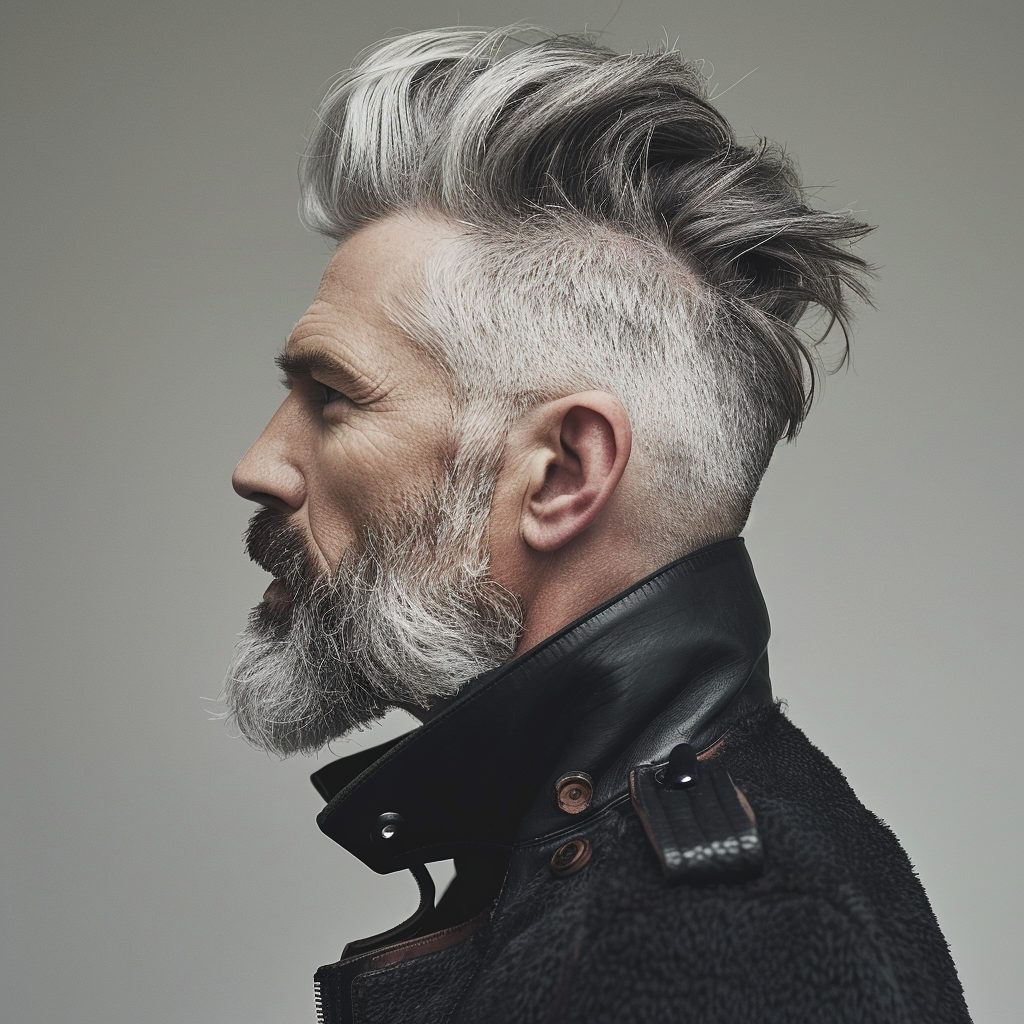Unleashing 70s Men’s Hairstyles: Groovy, Funky, and Far Out!
Step into the time machine and rewind the clock to the dazzling 1970s, a period that remains an iconic chapter in men’s fashion and grooming. The ’70s were an age of exuberance and free-spirited self-expression like no other, where men’s hairstyles became a canvas for bold experimentation. From the glitzy disco balls to the mesmerizing lava lamps, it was a time when the boundaries of fashion were gleefully stretched to the max, resulting in hair-raising trends that defined a generation.
The 1970s was a decade marked by cultural transformation and a spirited break from conventional norms. Men’s fashion and grooming witnessed a radical departure from the more conservative styles of previous decades. Whether it was the free-flowing, long hair of the counterculture, the laid-back, shaggy look that epitomized the era, or the Afro that stood as a symbol of pride and identity during the civil rights movement, the ’70s offered a smorgasbord of hairstyles.
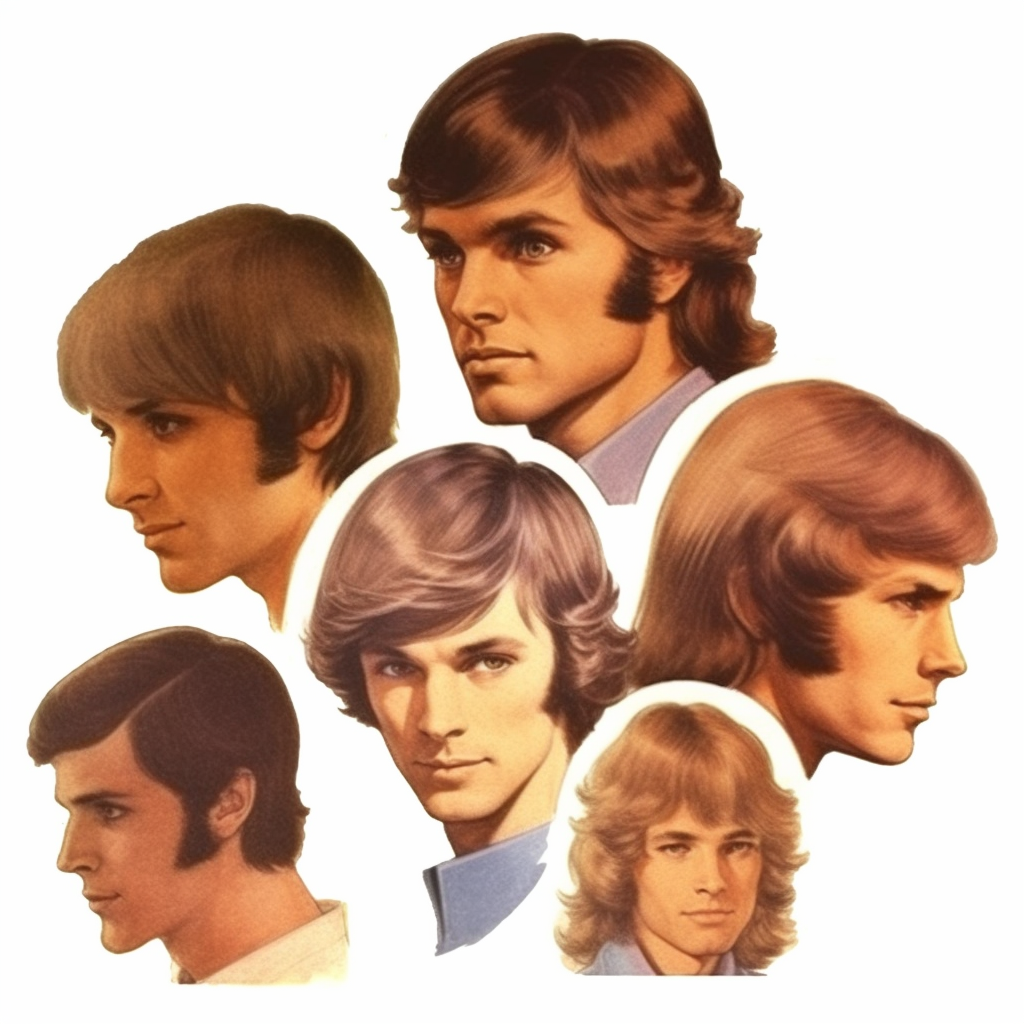
From mutton chops to perms and waves, feathered hair to flamboyant sideburns, men weren’t just following trends; they were making bold statements. The ’70s was a time when individuality reigned supreme, and men’s grooming was no exception.
In this whimsical flashback, we’ll take you on a tour through the iconic looks and trends of the 1970s, offering a glimpse into the cultural and historical influences that transformed this era into a playground of innovation and self-expression. So, fasten your seatbelts as we embark on a playful journey into the captivating world of 1970s men’s fashion and hairstyles, where grooviness reigned supreme and the boundaries of fashion were pushed to the max.
The Shaggy Rocker Cut
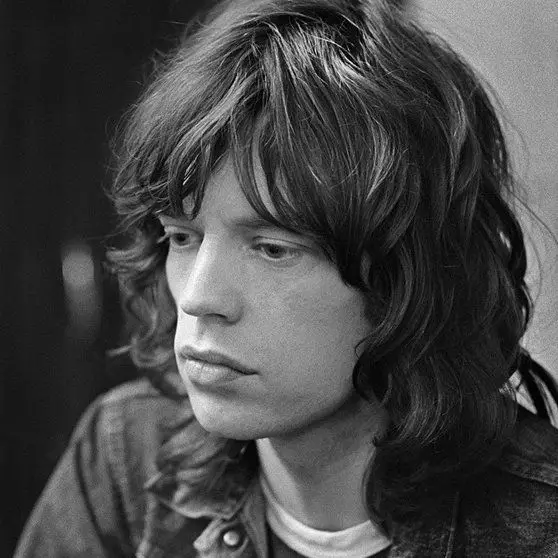
The 70s gave birth to a new breed of rockstars, and with them came the shaggy rocker haircut. Bands like Led Zeppelin and The Rolling Stones rocked this carefree and tousled style, which featured long, layered hair with a natural flow. This effortlessly cool look was perfect for headbanging on stage or strumming the guitar with attitude. The shaggy rocker cut epitomized the free-spirited and rebellious nature of rock ‘n’ roll.
The 1970s witnessed the emergence of a distinctive rock ‘n’ roll era, complete with a fresh breed of rockstars. This signature look was characterized by long, layered hair that flowed naturally, exuding an effortlessly cool vibe. The shaggy rocker cut was more than just a hairstyle; it became a symbol of rebellion and free-spirited self-expression. It perfectly suited the energetic performances of rock legends on stage, enabling headbanging to the rhythm of the drums and guitar strumming with an attitude that defined the era.
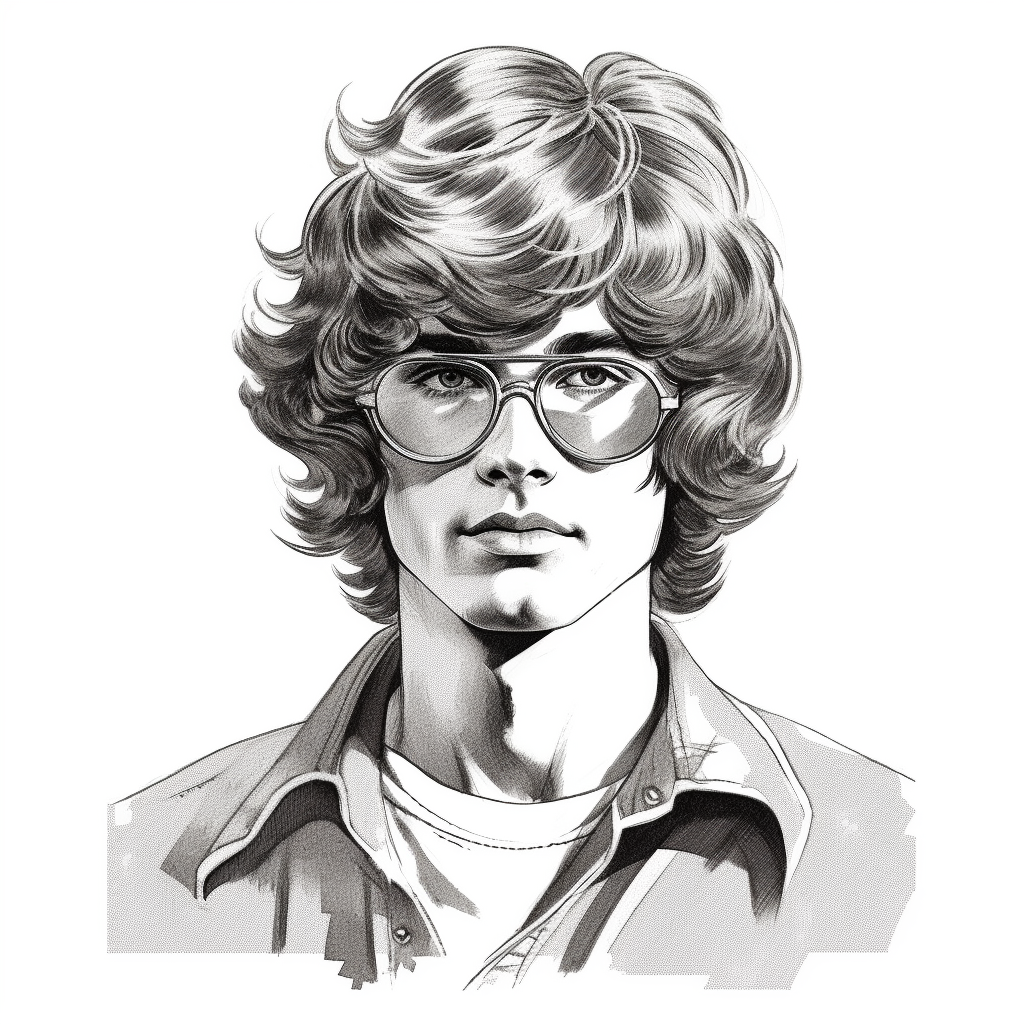
Beyond its visual appeal, the shaggy rocker haircut epitomized the countercultural essence of rock ‘n’ roll during the ’70s. It symbolized a period when music and style were vehicles for challenging norms and inciting societal change. This haircut was a reminder of the era’s bold defiance against conformity, showcasing how music and fashion can transcend boundaries, making a lasting impact on cultural history.
The Funky Afro
Continuing the trend of the afro, the 70s brought forth the funky afro, taking the style to new heights of extravagance. Men embraced larger-than-life afros with an explosion of volume and texture. This bold and funky hairstyle was a symbol of self-expression and cultural pride. Artists like Jimi Hendrix and Isaac Hayes rocked their afros with confidence, exuding a unique blend of style and soul. The funky afro was a statement-making choice that represented the spirit of the era and captured the attention of everyone around.
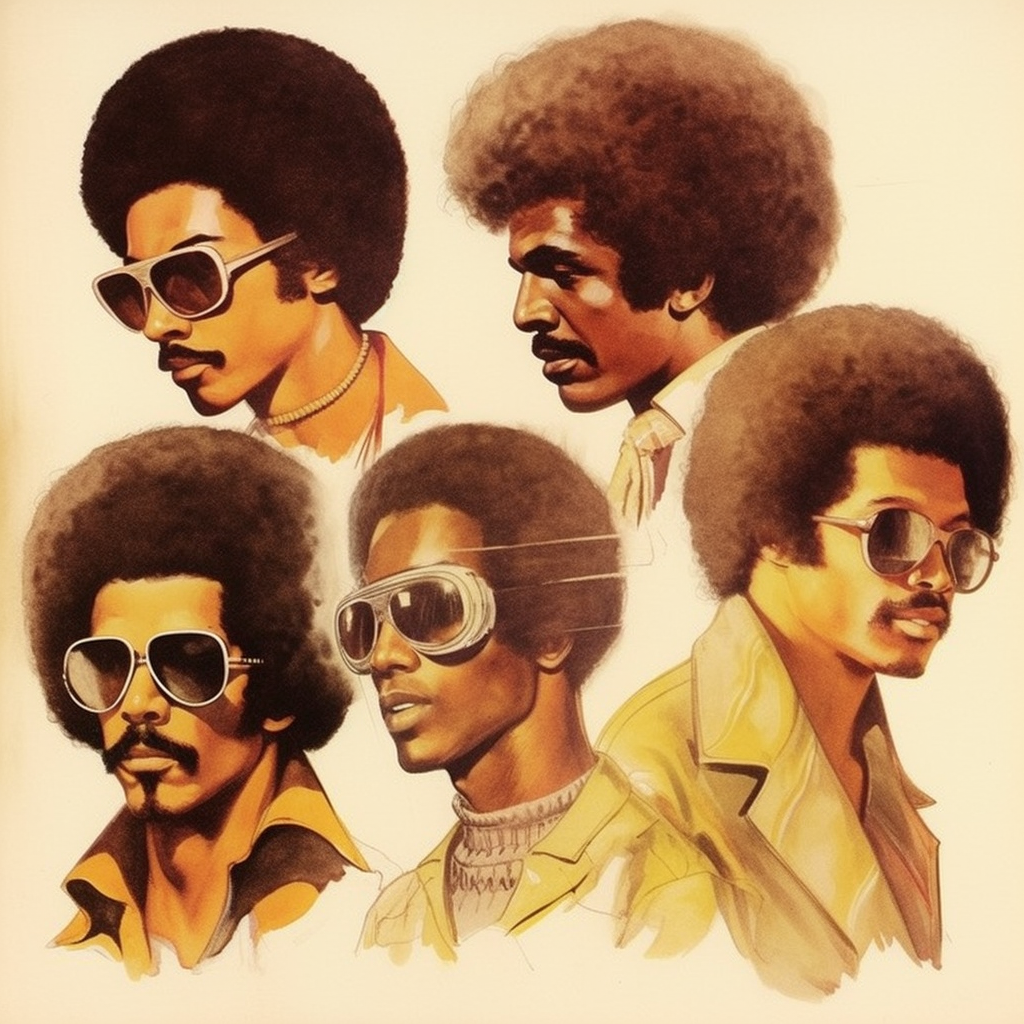
The Slicked-Back Greaser 1950s Resurgence
By the mid-1970s, the greaser image had become a quintessential part of 1950s nostalgia and cultural revival. [source] Channeling the rebellious spirit of the 70s greaser subculture, the slicked-back hairstyle became an iconic choice for men who wanted to exude coolness and attitude. This style involved combing the hair back with the help of hair gel or pomade, creating a sleek and polished appearance. Popularized by movies like “Grease” and actors like John Travolta, the slicked-back greaser look was synonymous with leather jackets, motorcycle culture, and a hint of danger. It embodied a sense of edginess and defiance, making it a favorite among men who embraced a rock ‘n’ roll aesthetic.
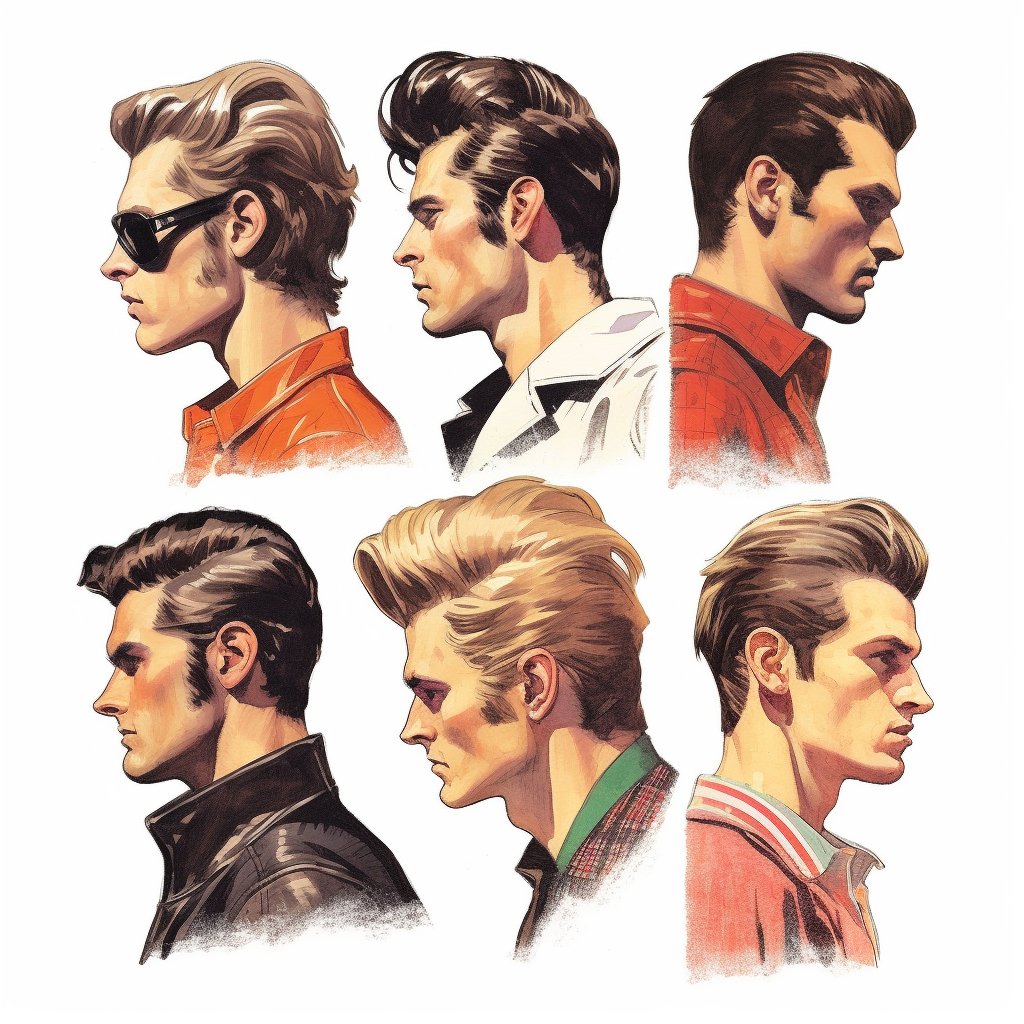
As a cultural phenomenon, the slicked-back greaser hairstyle not only paid homage to the past but also redefined it. It seamlessly fused the rebellious energy of the 1950s greaser culture with the evolving attitudes of the 1970s. This amalgamation of eras created a look that transcended time, becoming a symbol of timeless coolness and a distinctive expression of personal style. The slicked-back hair wasn’t just a hairstyle; it was a statement, a nod to the rebels and outlaws of the past, and a badge of individuality for those who wanted to embrace a classic look with a modern edge.
There were several other pop culture references that showcased the strong influence of the 1950s greaser look in the 1970s:
- Television Shows: TV series such as “Happy Days” and “Laverne & Shirley,” which aired during the 1970s, depicted characters sporting greaser-inspired hairstyles and attire. Fonzie, played by Henry Winkler in “Happy Days,” became an iconic figure known for his slicked-back hair, leather jacket, and motorcycle, embodying the essence of the 1950s greaser culture.
- Music: Various rock ‘n’ roll and punk rock bands of the 1970s drew inspiration from the rebellious style of 1950s greasers. Artists like Elvis Presley, Buddy Holly, and the Ramones, known for their music and distinctive fashion choices, helped keep the greaser aesthetic alive and well in the 1970s music scene.
- Fashion: The 1970s saw a resurgence of interest in vintage fashion, including 1950s-inspired clothing and hairstyles. Fashion designers and brands incorporated elements of greaser style into their collections, with leather jackets, jeans, and slicked-back hair becoming popular choices among both men and women.
- Subcultures: Various subcultures that emerged in the 1970s, such as the rockabilly and punk movements, embraced aspects of greaser culture. These subcultures celebrated individuality, rebellion, and nonconformity, making the greaser look a natural fit for their aesthetic.
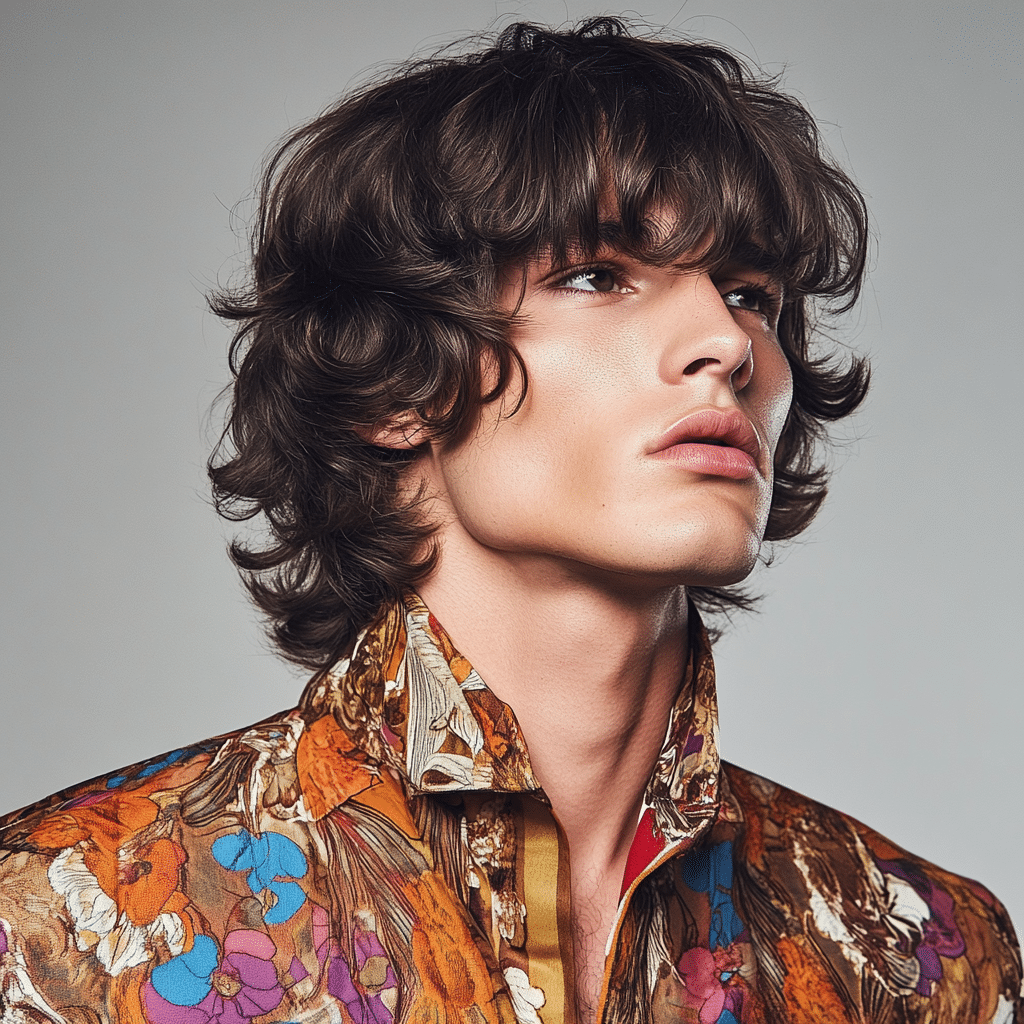
Overall, the 1950s greaser look remained a strong and influential presence in 1970s pop culture, serving as a symbol of rebellion, authenticity, and timeless coolness.
The Fierce Pompadour
The pompadour hairstyle had a resurgence in the 70s, thanks to style icons like Elvis Presley. This bold and stylish cut featured short sides and a voluminous, slicked-back top. It exuded a sense of confidence and sophistication, making it a popular choice for men who wanted to make a statement. The pompadour represented a blend of classic elegance and contemporary flair, capturing the essence of the 70s aesthetic.
One distinctive feature of the 70s pompadour was its versatility. While maintaining the classic elements of the hairstyle, such as the voluminous top and short sides, men embraced variations that reflected the eclectic spirit of the decade. Some opted for softer, more natural-looking pompadours with less height and a more relaxed finish, while others embraced the exaggerated proportions and sharp angles characteristic of the era.
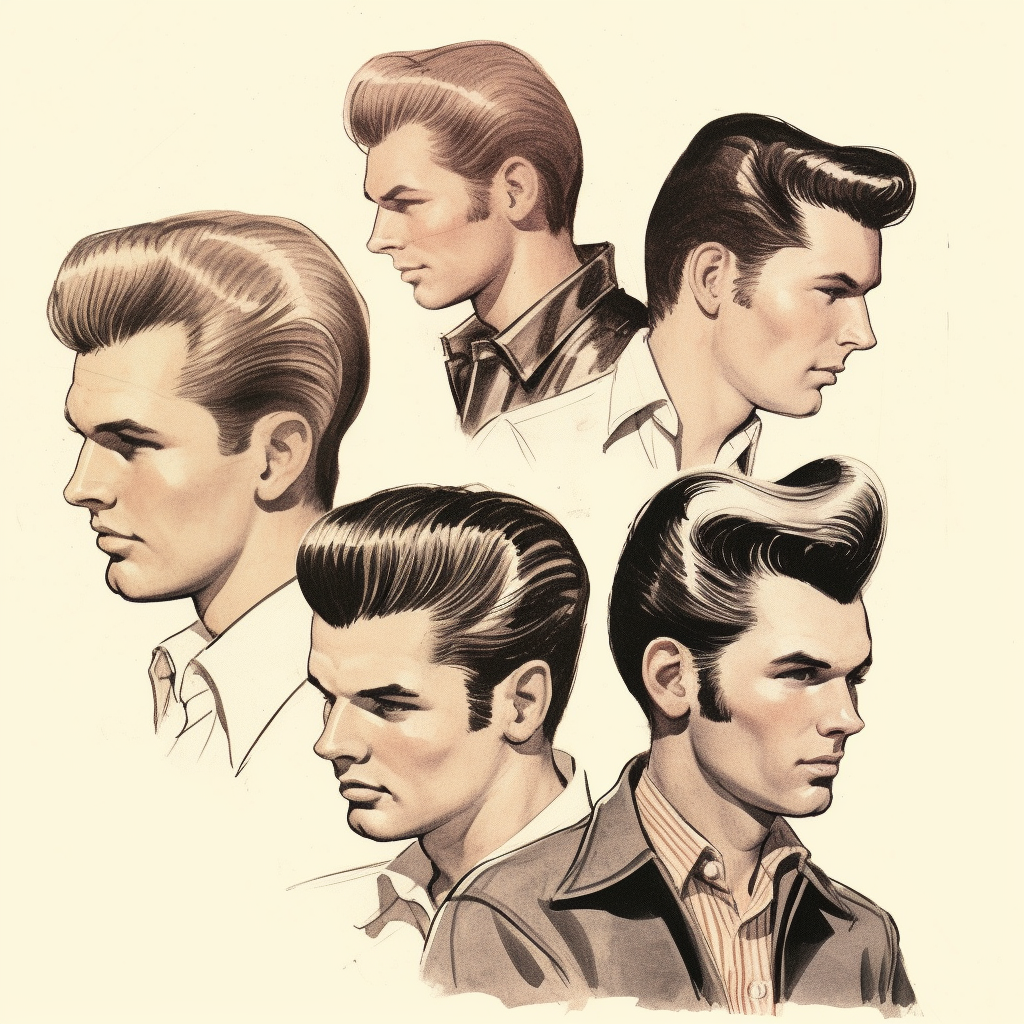
To achieve the perfect 70s pompadour, men relied on a variety of styling techniques and products. Hair gel, pomade, and hairspray were essential tools for sculpting the hair into the desired shape and ensuring long-lasting hold. Styling involved meticulously combing the hair upwards and back, creating volume at the crown and smoothing down the sides for a polished finish.
The pompadour hairstyle of the 70s was not just a haircut; it was a symbol of confidence, sophistication, and individuality. Men who sported this iconic look exuded an air of self-assuredness and style, whether they were strutting down the streets of urban centers or gracing the stage with their presence. From rock ‘n’ roll performers to fashion-forward trendsetters, the pompadour became a signature style that epitomized the essence of 70s menswear and grooming.
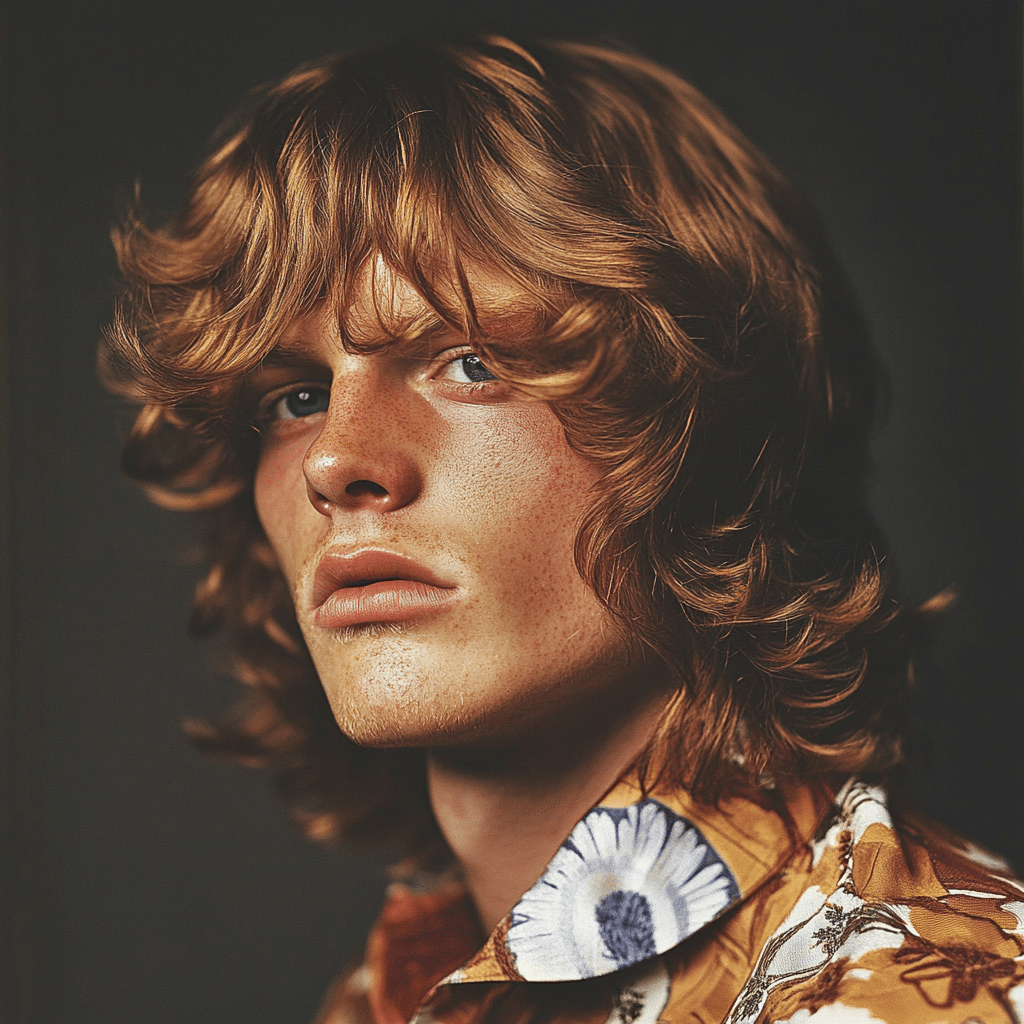
Beyond its aesthetic appeal, the pompadour also carried cultural significance in the 1970s. As a nod to the past while embracing the trends of the present, it represented a fusion of classic elegance and contemporary flair. It was a hairstyle that transcended generations, appealing to both those who appreciated retro nostalgia and those who sought to push the boundaries of fashion and style.
In essence, the pompadour hairstyle of the 1970s was a testament to the enduring power of classic grooming techniques and the ability of hairstyles to capture the spirit of an era. It remains a timeless symbol of style and sophistication, continuing to inspire men’s fashion and grooming trends to this day.
The Mutton Chops and Sideburns
Facial hair was not limited to just mustaches in the 70s. The era saw the rise of mutton chops and sideburns as popular facial hair styles for men. Mutton chops were characterized by thick sideburns that extended down the jawline and connected to a mustache, while sideburns were long and extended down the sides of the face. These bold and distinctive facial hair styles were sported by celebrities like Elvis Presley and Burt Reynolds, adding a touch of rugged charm and masculinity to their overall appearance. Men embraced mutton chops and sideburns as a way to showcase their individuality and rebellious spirit.
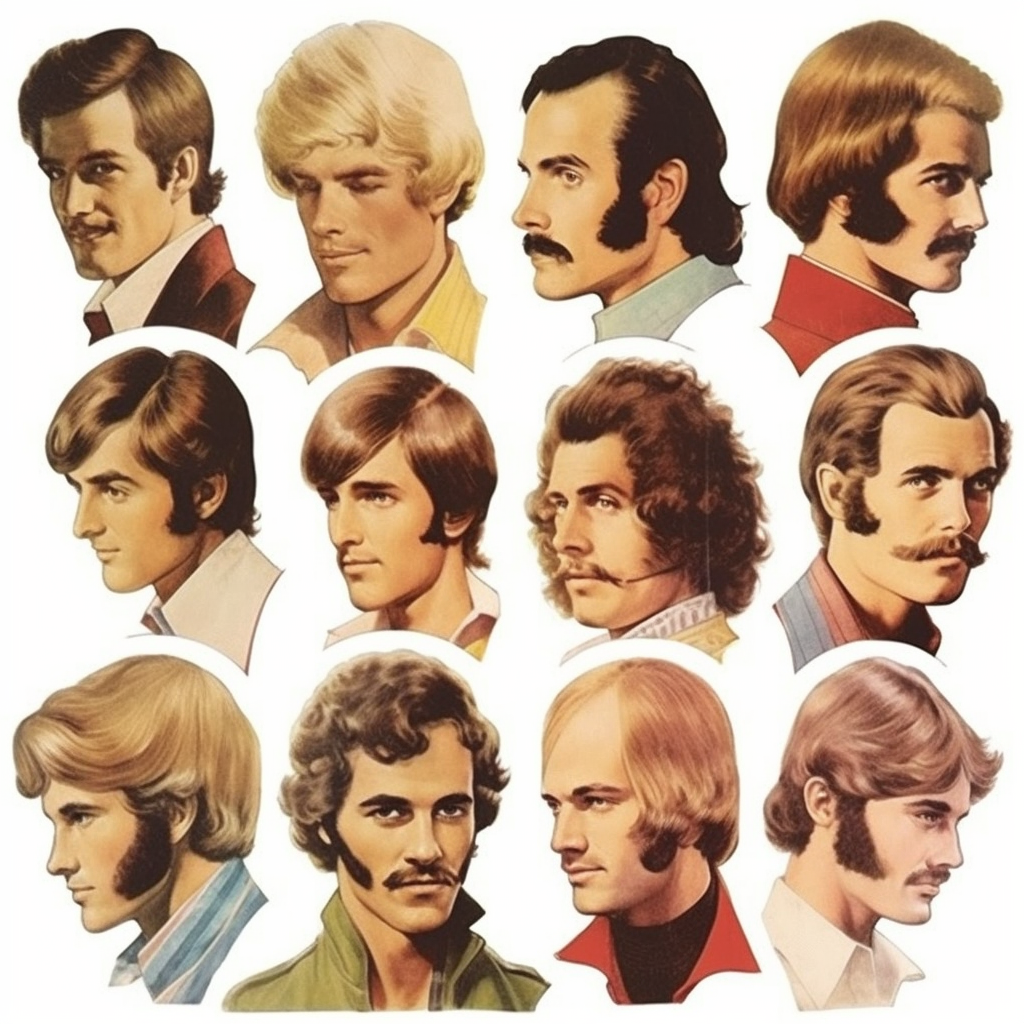
The 70s was an era of limitless self-expression, and men’s hairstyles played a key role in showcasing individuality and embracing the cultural shifts of the time. From the shaggy rocker cut to the bouncy afro, the funky afro to the fierce pompadour, and the mutton chops and sideburns, each haircut reflected the diverse tastes and preferences of the era.
Pop culture icons like Led Zeppelin, Elvis Presley, Jimi Hendrix, and influential figures from sports and cinema left an indelible mark, inspiring men to experiment with their hair and celebrate their unique style. So, embrace the groovy and funky spirit of the 70s, and let your haircut be a vibrant reflection of your personality and the era that continues to inspire.
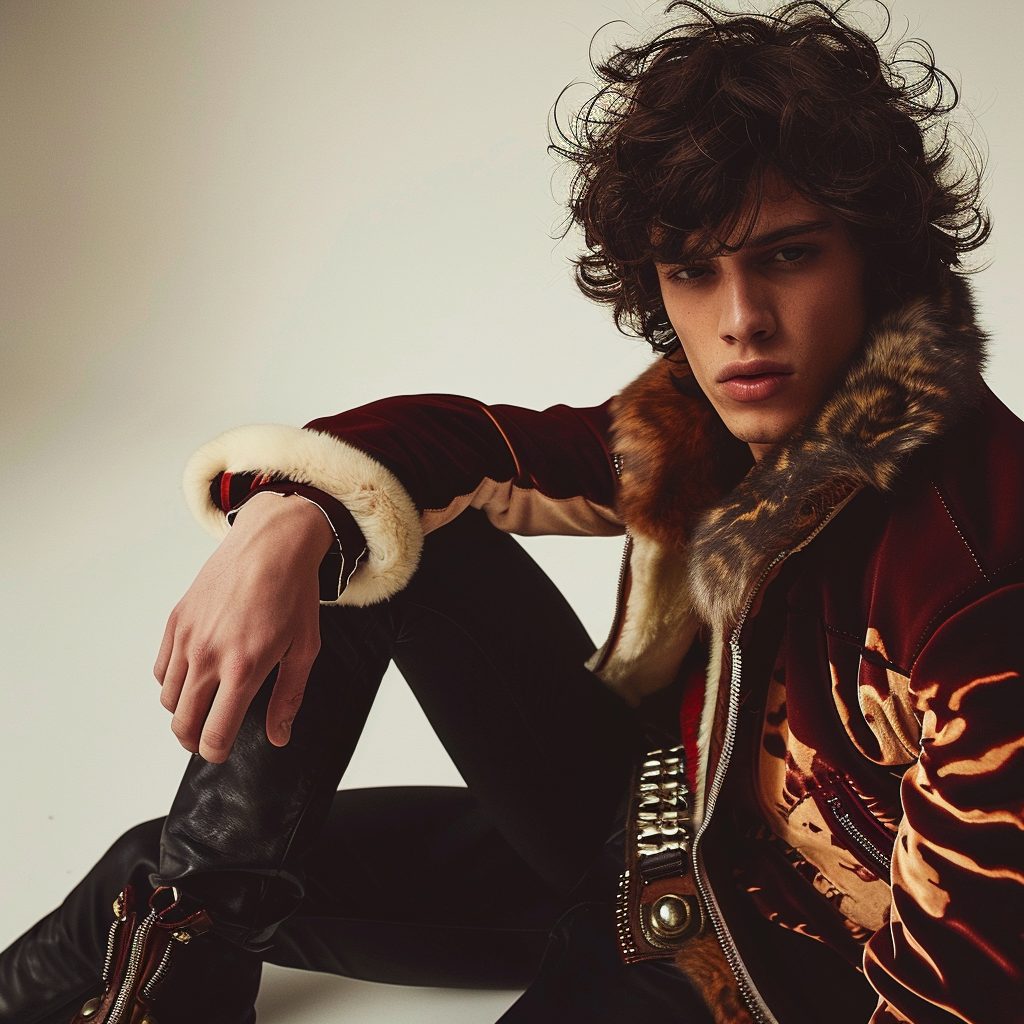
1970s TV Shows and Men’s Hair Trends
Numerous shows not only reflected the fashion and hairstyles of the era but also played a significant role in shaping pop culture. From the perspective of men’s 70s hairstyles, these TV shows showcased a diverse array of characters, each with their own distinctive style, contributing to the rich tapestry of 1970s fashion and grooming trends.
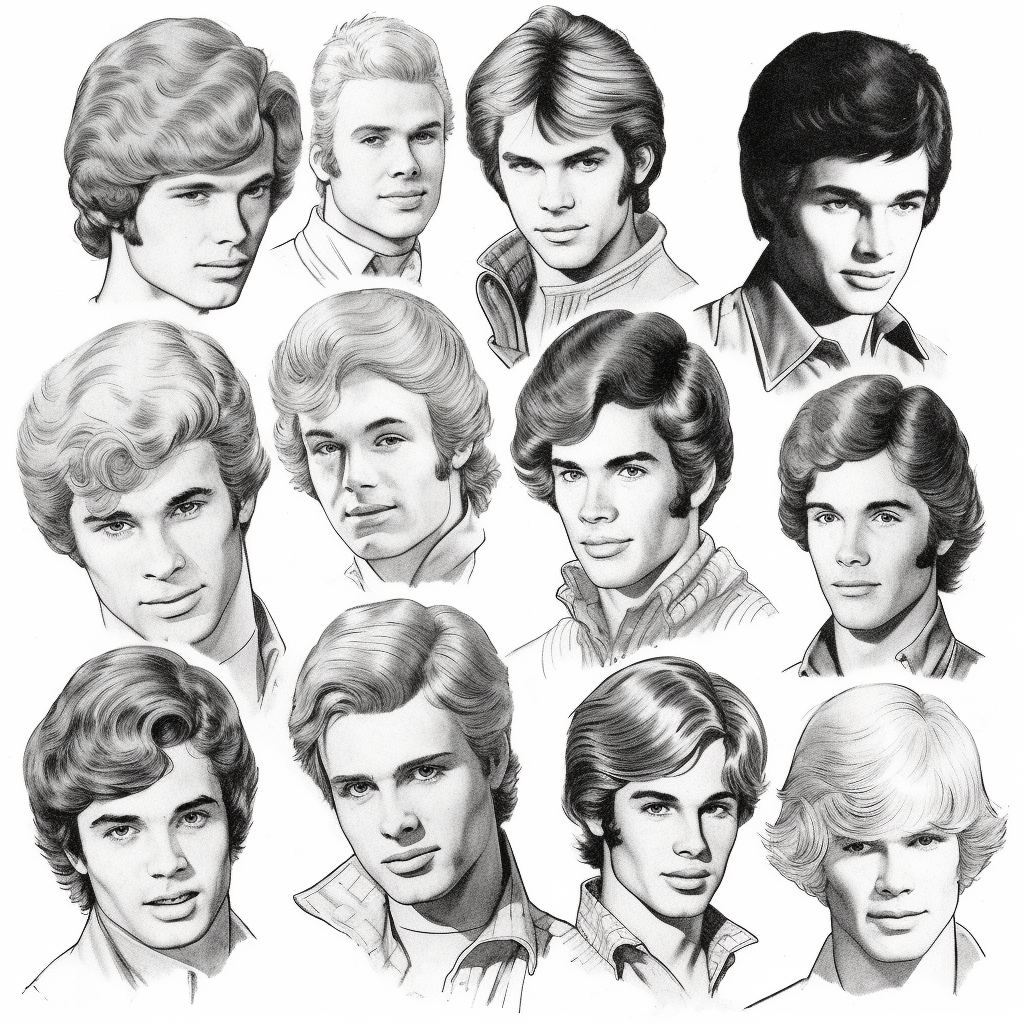
- “Charlie’s Angels”: This iconic detective drama may have primarily focused on its glamorous female leads, but it also offered glimpses of men’s hairstyles of the era. While the attention often went to the Farrah Fawcett’s feathered and layered hairstyle, known as the “Farrah flip,” male characters sported various looks ranging from the classic side-parted style to longer, shaggier cuts that captured the laid-back vibe of the decade.
- “Happy Days”: Set in the 1950s but airing in the 1970s, “Happy Days” provided a nostalgic nod to the past while reflecting contemporary grooming trends. Characters like Fonzie, with his slicked-back hair and leather jacket, epitomized the classic greaser style that experienced a resurgence in popularity during the 70s, resonating with male viewers who sought to channel a sense of rebellious coolness.
- “The Brady Bunch”: As a family sitcom beloved by audiences across generations, “The Brady Bunch” showcased a range of men’s hairstyles that captured the diversity of its characters and the evolving fashion trends of the 1970s. From Greg Brady’s shaggy surfer-style locks to Mike Brady’s conservative yet fashionable short haircut, the show reflected the changing attitudes towards grooming and personal style during the era.
- “All in the Family”: Known for its bold approach to social issues and relatable characters, “All in the Family” featured hairstyles that were emblematic of working-class America in the 1970s. Characters like Archie Bunker sported conservative, no-nonsense hairstyles that reflected their blue-collar roots, while others embraced longer, more relaxed cuts that symbolized the shifting cultural landscape of the era.
- “The Jeffersons”: As a spin-off of “All in the Family,” “The Jeffersons” offered a glimpse into the lives of an affluent African American family living in New York City. Male characters like George Jefferson showcased sophisticated and fashionable hairstyles that reflected their success and urban lifestyle, embodying the aspirational spirit of the 1970s.
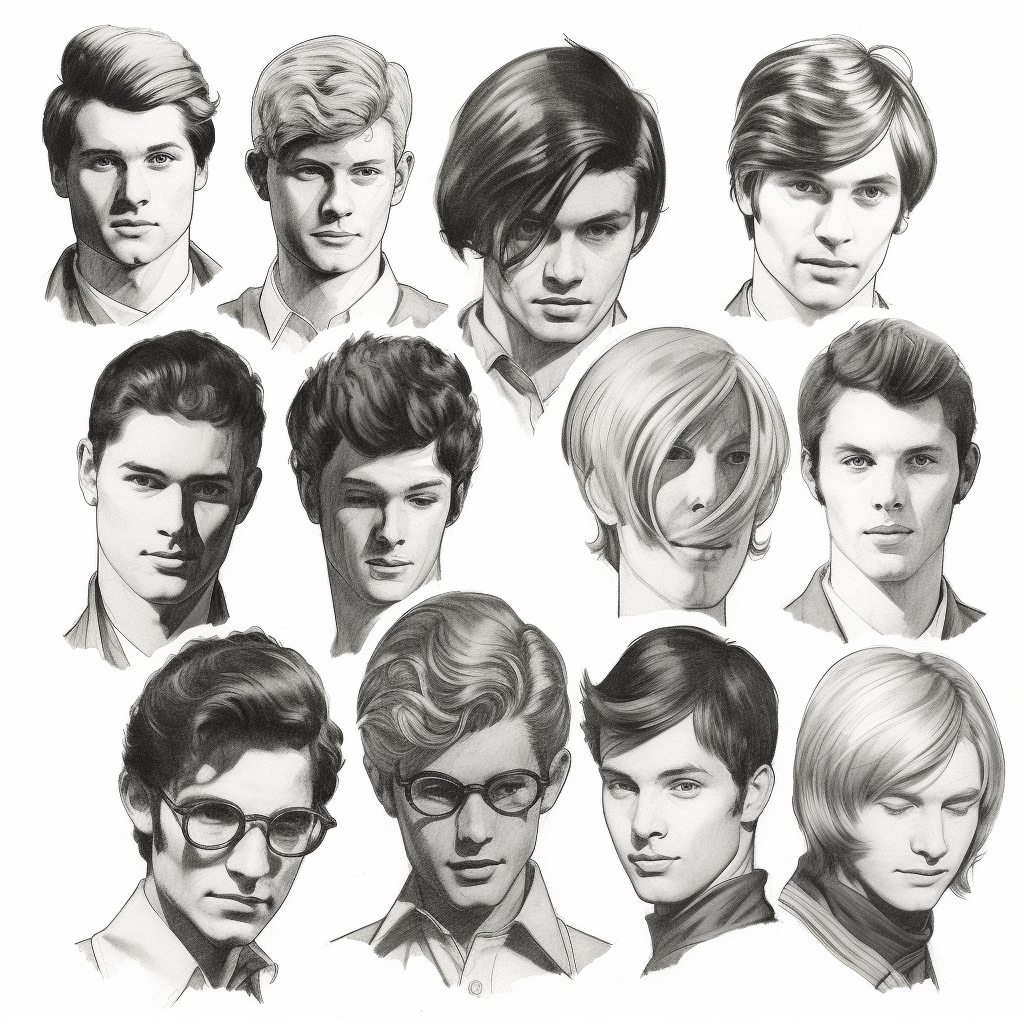
Overall, 1970s television shows provided a platform for showcasing men’s hairstyles of the era, from classic greaser looks to laid-back surfer styles. These shows not only entertained audiences but also influenced fashion and grooming trends, leaving an indelible mark on the cultural landscape of the decade.
